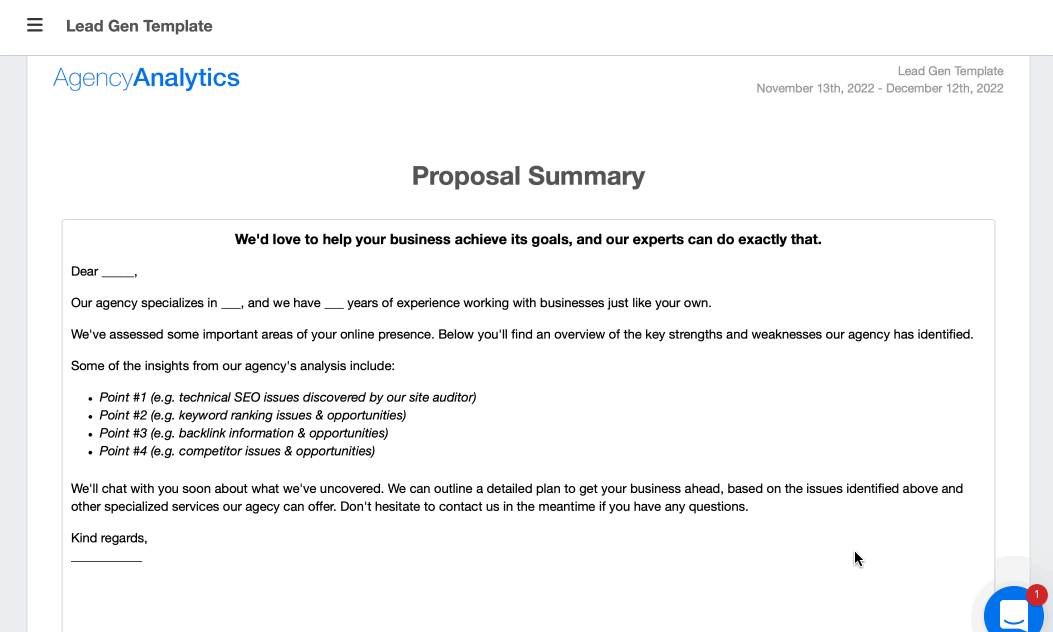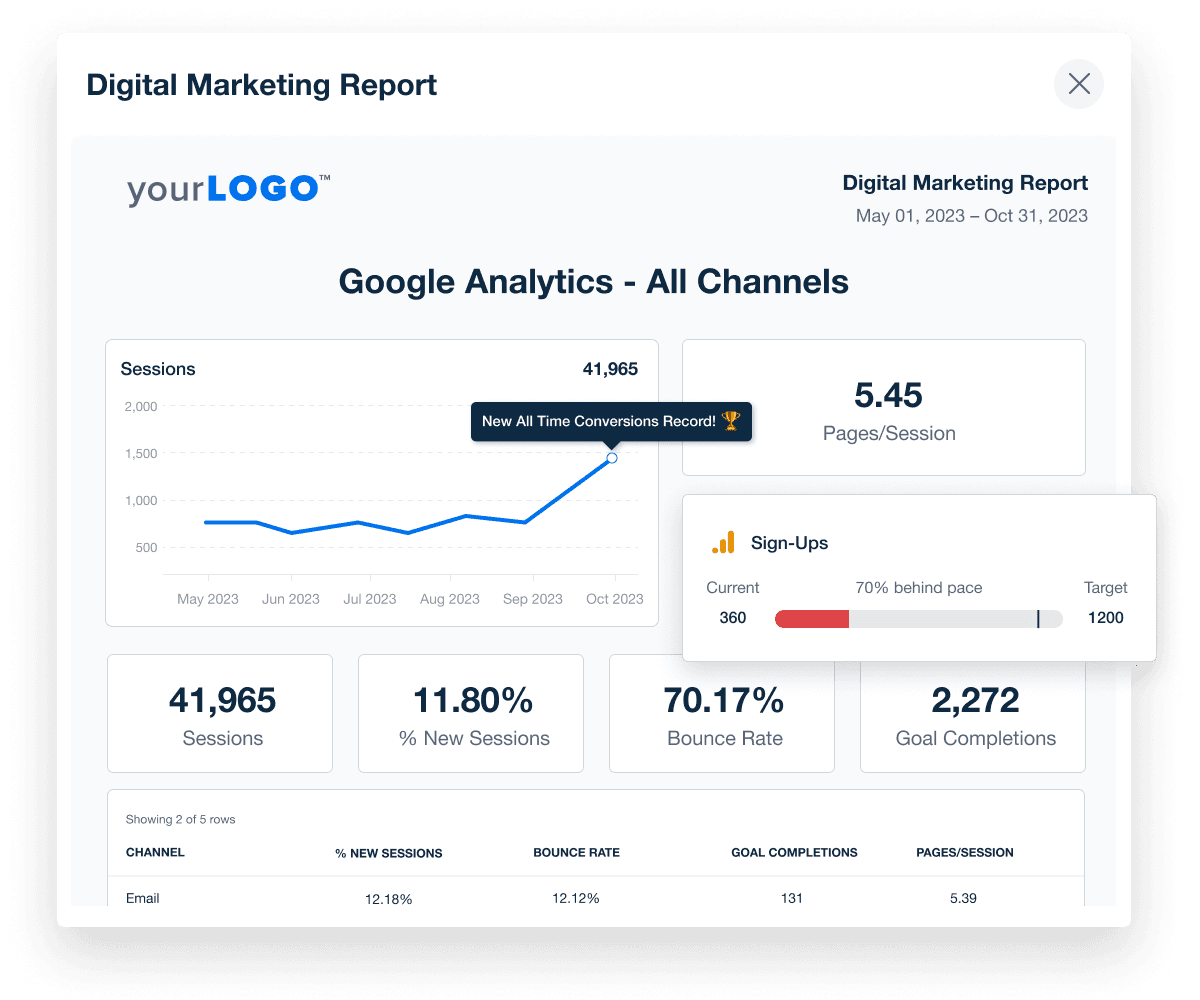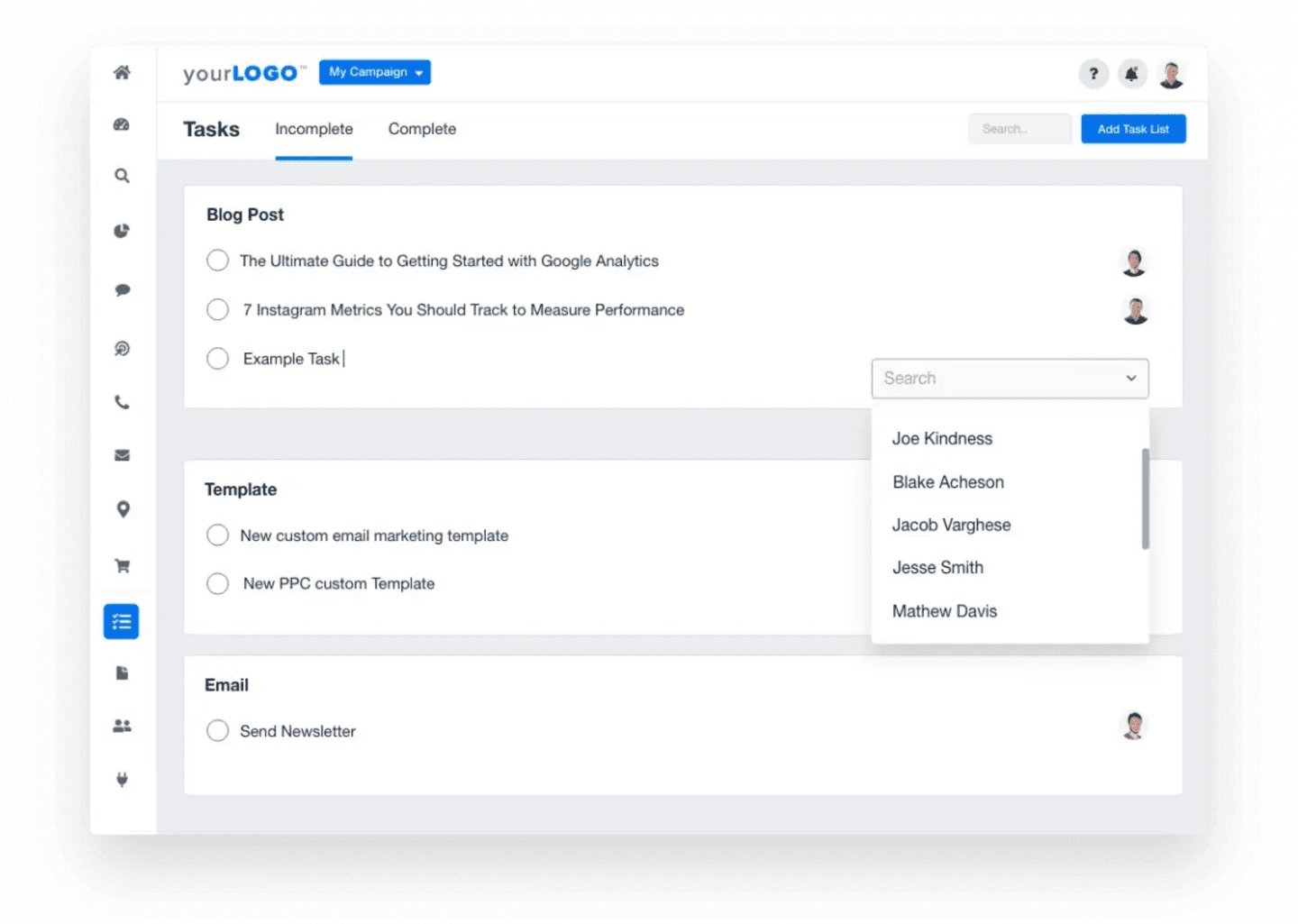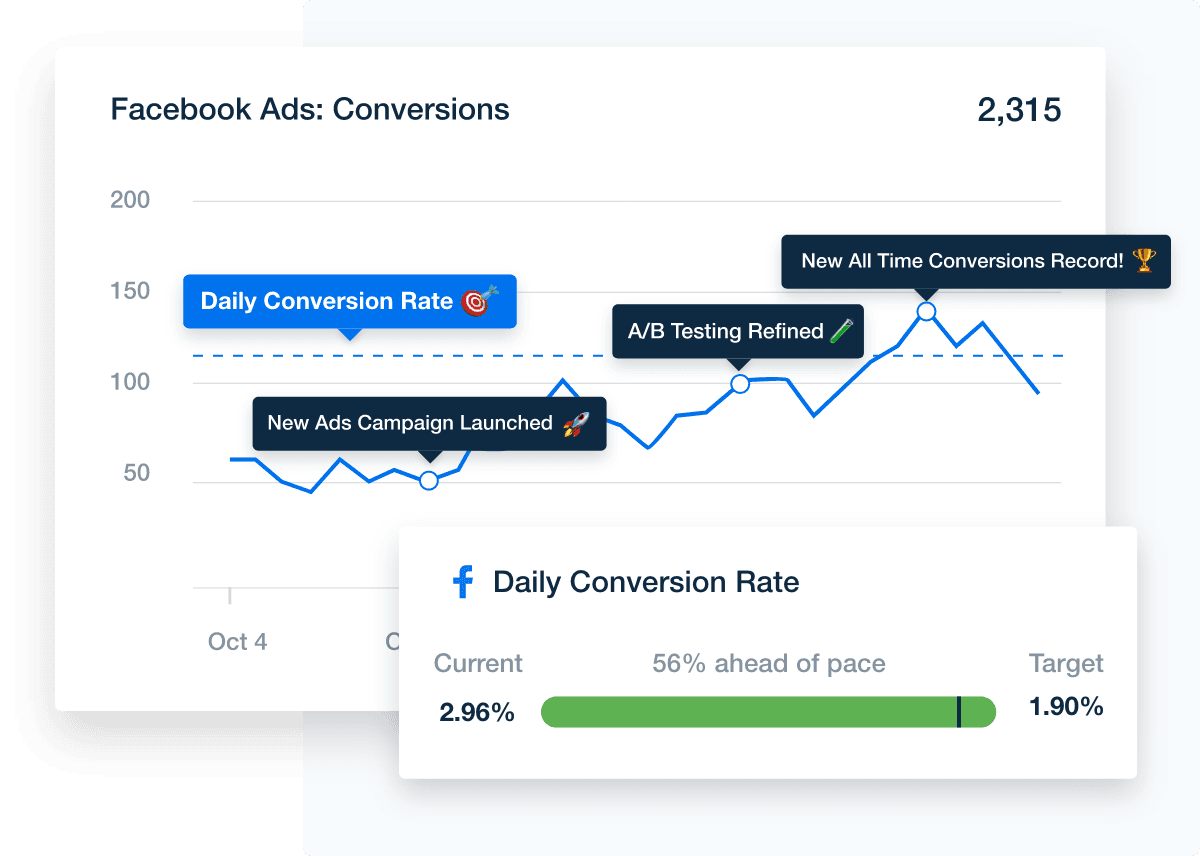Table of Contents
QUICK SUMMARY:
Marketing agency-client relationships are central to maintaining effective partnerships and sustaining client retention. These relationships are founded on transparent communication, clear expectations, and mutual respect. Agencies benefit from consistently fostering trust, which enhances client retention while increasing client lifetime value through comprehensive service engagement.
Like any important relationship in life, creating healthy connections with your clients takes time, clear communication, and, above all else, trust. Saying what you’ll do and doing what you’ve said keeps clients coming back for future projects, extending your relationship for the long-haul.
It doesn’t matter how well you know your industry or how deeply you understand your clients’ target audience. Without transparency, building a strong client-agency relationship will always be an uphill battle.
According to our recent agency benchmarks survey, 36% of agencies stated that effective communication and transparency was the #1 factor influencing client retention. In another survey from 2022, marketing leaders shared that 80% of clients view transparency as a crucial component of the agency-client relationship. That being said, only 56% of clients reported actually having an honest, transparent relationship with their agency. That’s an unsettling 24% gap.
The question becomes: What strategies can you implement to nurture honest communication, ensure mutual respect, and build a good client agency relationship that lasts?
Reaping the Benefits of a Transparent Agency Client Relationship
Fostering marketing agency transparency isn’t a one-and-done task. It takes time, effort, and a willingness to have some difficult conversations. Here’s why it’s worth the investment:
Alignment leads to fewer headaches. Consistent communication means you and your client will be working toward a shared vision when it comes to scope, key KPIs, and billing, reducing the likelihood of scope creep.
Clear expectations keeps everyone on the same page. By setting realistic expectations early, you’ll have a comprehensive understanding of your client’s short and long term growth goals. It sets the foundation for a good client agency relationship.
Transparency builds trust and mutual respect. A client that genuinely trusts your agency is more likely to be honest about their own limitations, financial concerns and expectations, which makes your job exponentially easier.
Clear and transparent communication increases client retention. When an agency can clearly articulate how they are positively contributing to the client’s bottom line, it’s easier to keep those contracts year after year. A short-term contract can easily become a multi-year commitment when an agency-client relationship is built on trust.
Honesty can increase a customer’s lifetime value. A loyal client who values your input is more likely to use more services, allowing your agency to generate higher earnings from a single client.
While relationship opacity certainly isn’t the only reason that agency-client relationships fail, failure to build a transparent partnership can lead to increased client churn, dangerous scope creep and a misalignment of expectations.
Incorporating transparency-enhancing processes into your client interactions assists you in identifying problems early and addressing them before it’s too late.
Client retention is key to the success of our business. By using AgencyAnalytics, we are able to provide our clients with insightful, accurate, and detailed reports. It showcases the value we bring to a client's business. This level of transparency and clear communication helps foster trust and build strong agency-client relationships, which in turn leads to higher levels of client retention.
Adam Binder, Founder + CEO, Creative Click Media
Foster Transparency at Every Stage of the Client-Agency Relationship
Transparency looks a little bit different throughout the various stages of the agency-client relationship.
Let’s explore what success looks like at each stage of the client-agency partnership:

Lead Generation
When you’re first courting a new client, it’s essential to be honest (with both the prospective client and yourself) about what you have to offer. Digital marketing agencies that eagerly take on any client, regardless of the compatibility level, often end up with disappointed customers and frustrated employees. Ask questions, and don’t hesitate to set boundaries early. It ensures the client-agency relationship starts on the right foot.
Always keep the client's goals in mind when preparing your proposal! If your client's goal is leads, be sure to mention how your proposed changes will generate more leads. I often see people create generic proposals that mention their agencies preferred metrics, and not the clients.
Joseph Blossman Jr., Performance Marketing Manager, Morris Marketing Group
Success Metric: Both parties are aligned in core values, goals and expectations. Bonus points if the client is forthcoming and appreciates your transparency and honesty.
Client Orientation
Get out the champagne, you’ve officially won the contract. Now it’s your time to shine.
Onboarding a new client is an essential step in the relationship-building process. Proper orientation ensures you avoid any miscommunication, fully understand client expectations and establish your professionalism early.
It’s important to talk openly about defining goals and setting up key metrics.
We start with a template for our new clients, and during their onboarding, we ask what their top KPIs are. We make sure to include those on the first page for them. As we have our first few strategy meetings, we take a look at these reports and ask our clients about their reports, and make edits to the templates with our clients as another customization tool.
Christina Cypher, Director of Marketing, Click Control Marketing
Invest time into your client to ensure they understand your strategies and the reasoning behind each decision, your pricing breakdown, and how you can realistically help.
For tips on successful onboarding, check out our checklist.
Success Metric: Communication is flowing well in the client-agency relationship. You’ve set up multiple check-ins with your client to ensure you’re on the same page in terms of expectations, scope, and targets.
In-Depth Research
While every agency has their own discovery strategy, there is always more to learn about a client than what the pre-sales discovery sessions will often uncover. Agency transparency will always create a smoother, more proactive process as you dig out the finer details of a client’s goals and needs. Consistent dialogue–and frequent check-ins–while you learn about your client’s industry, competitors, and current marketing assets will ensure that you gather an accurate picture of their brand. This will contribute to a good client-agency relationship later on.
Success Metric: You have a clear understanding of where the client has come from, where they want to go, and how your agency will take them there.
Every time we sign a new client, the client and the writer sit down and do a full discovery. 5 years ago we didn't do that. And we missed the mark a lot because we didn’t have that full context. What are the goals? What does the client want to do? What have they done that they like? What don’t they like?
Brock Murray, Co-Founder and COO, seoplus+
Marketing Strategy
Although it’s common to develop a preliminary marketing strategy as part of the client acquisition process, that strategy is not–and shouldn’t be–set in stone. The more you learn about the client’s strengths and weaknesses, and how they dovetail with your agency’s capabilities, the easier it is to build and optimize a customized strategy.
Once established, set up meetings to thoroughly explain the strategy to your client, allowing them time and space to provide honest feedback. It’s essential to work with your client through this process to ensure all parties understand and approve each part of your marketing plan.
We get a lot of client feedback on our levels of responsiveness and transparency. We clarify what is happening throughout the process and take ownership of our work and its outcomes. People appreciate that approach, our accountability and the fact that we really own it. We make sure that we demystify the process for our clients. We don’t have secrets, there is no ‘smoke and mirrors’ or unnecessary jargon.
Nathan Harding, Founder & Managing Director, Yo Media
Success Metric: Your client understands why every piece of the strategy has been added. Both the client and agency agree on how expected results will be delivered.
Execution
This is when you prove your worth as a marketing agency. As you launch campaigns, social media strategy and content creation, it’s vital to continue your check-ins, ideally through weekly or bi-weekly meet-ups.
Keep your agency’s productivity tools, such as content briefs, handy so that you keep things moving along at a steady pace.
Although this part is where your agency is knee-deep in the nitty-gritty of getting things done, make sure that you keep your client’s eye on the reason why your agency is executing these programs.
We sell SEO and PPC Services, but our clients don't care about how they work, they care about calls and their bottom line. I can show them beautiful numbers, traffic patterns, increases in rankings, etc. But at the end of the day, they're paying us for a service to increase their revenue. Our job is to show our clients that their investment is actually generating revenue to cover their expenses and more.
Ruben Roel, President, Investigator Marketing
Highlight data-driven insights regarding why a particular social media post performed better than another, or low engagement rates on a particular blog post and how it has influenced a content update show that your agency is paying attention.
Along with reporting your agency’s successes, it’s also important to be transparent with any issues that arise to avoid disappointment in the long-run. Trying to hide under-performance under a sea of vanity metrics will only lead to client disappointment down the road. It may even derail or end the client-agency relationship.
Success Metric: You have established a process for approvals and the client understands how and when to provide feedback prior to a campaign or asset launch. Bonus points if the client agrees to your concepts with a single round of revisions or less—that’s a sign that you’ve done the work ahead of time to align on expectations.
Analysis
Keeping track of campaign performance in real time allows you and your client to transparently celebrate victories while getting ahead of any lagging numbers. At this point, you’ll be able to put your data analytics tools to use, and (if it makes sense for the client) grant access so they can check in on the numbers whenever they please. If the data isn’t telling the right story, be honest with your client and re-evaluate if necessary.
It's our job to tell a simple story through reporting to our clients. The report is the client proof that what we are doing is benefiting their business in a positive way. Using AgencyAnalytics allows us to quickly create beautiful reports that tell a story in a way our clients can understand.
Brian Ferritto, Partner, 42connect
Data-driven marketing is all about using metrics and key performance indicators to improve marketing performance and drive an improved ROI for clients.
Success Metric: The client is aware of their ongoing analytics and feels comfortable bringing any questions or concerns directly to you for discussion. Further, both the client and agency are willing to re-evaluate and try again, even if initial data doesn’t meet their goals. This provides an opportunity for adjustments while ensuring a mutually beneficial relationship.
Agency Tip: With AgencyAnalytics, it's easy to see when your client opens a report. If they stop interacting with your reports or dashboards, it’s a sign of possible churn and an excellent trigger to book a call.
Our clients appreciate the transparency and consistent communication so they know what they're getting for their money. Lane Anderson, Founder & CEO, London Road Marketing
AgencyAnalytics has played an instrumental role in the growth and retention of our client portfolio. The combination of a sleek interface, dozens of native integrations, and tools that can be leveraged to win business and not just report on business make AgencyAnalytics a must-have for agencies small and large.
Adam Allen, CEO, LeaseMyMarketing
How To Build Strong Client-Agency Partnerships
If you’re eager to avoid the pitfalls of poor communication, check out our top strategies for building a transparent and successful client-agency relationship.
Strategy 1: Clearly Communicate Your Offerings
Communication starts at the beginning before any contracts are signed. In order to properly convey your value proposition, you need to fully understand it yourself. When creating a value prop, keep the following in mind:
Know your client's business and what they need from you.
Understand your offerings.
Now rank them. Identify what you do best.
Once you successfully sell a client on your agency, it’s important to align on deliverables. It's a key part of building trust in any client-agency relationship.
Be honest about the services you can deliver and those you can’t. If you’re amazing at SEO but not a great content writer, let them know early on, preferably in writing. To avoid confusion in the long term, create a document listing your strategy, complete with services offered. It ensures alignment with your client's business and their expectations.

Create professional SEO proposals in minutes that show clients exactly what your agency will bring to the table. Get started with a 14-day free trial.
Make sure your offerings fit with client expectations. If you’re not well-suited for the role, the agency-client relationship just isn’t built to last. While turning away work may seem counterintuitive, it’s always a better choice than taking on a client you won’t be able to satisfy.
We are pretty straightforward with our services and what we can and can not deliver, and we set expectations from the get-go for all of our clients. We don't focus on making a sale to make a sale, we always look for long-term and beneficial agency-client relationships.
Anatoly Zadorozhnyy, CEO, Marketing 1on1
Most importantly, never shy away from asking questions, especially before you’ve accepted the client. This will create a foundation for transparency and allow you to better understand if there’s potential for a good client-agency relationship.
Strategy 2: Set Clear Goals Through Honest Dialogue
While your client will likely have a high-level goal in mind, these goals may not be measurable or realistic. “Improve my marketing,” for example, isn’t as tangible of a goal as “increase my website traffic by 10% in six months”. And “Convert 50% more customers in one month” is probably just not possible.
That’s where you come in - with stellar communication. It’s important to thoroughly review relevant metrics while working with your client to set clear, attainable goals and timeframes, which you can track using AgencyAnalytics’ custom goals feature.

Automatically track how all your client campaigns are performing against key goals. Try AgencyAnalytics goal tracking with a 14-day free trial.
Through our dashboard, agencies can choose which metrics to monitor, set timeframes for each goal and set metric targets. By tracking key KPIs, you’ll be able to provide your client with a clear overview of each campaign’s progress, ultimately increasing customer retention.
Strategy 3: Provide Consistent, Accurate Reporting
Trust is earned, not given. By providing your clients with accurate, shared reporting, your agency demonstrates a commitment to transparency and integrity. This approach proves that your company is not manipulating data to paint a rosy picture but is, in fact, invested in providing an honest portrayal of the campaign's performance.

Consistent, accurate reporting not only provides information but transforms it into a powerful tool that nurtures trust, cultivates transparency, and fuels success. It's like giving clients a backstage pass–where they see the hard work, dedication, and expertise that goes into their campaigns.
AgencyAnalytics has been a lifesaver! It allows me to consolidate all of my client reporting into one user-friendly dashboard. In fact, I now use AgencyAnalytics in multiple stages of my business, including prospecting, pitching, launching websites, and of course, as a client retention tool. Adam Allen, CEO, LeaseMyMarketing
Strategy 4: Choose the Right Communication Tools
Communicating often is helpful when creating solid client-agency relationships, but it’s not enough.
To truly build a successful agency-client relationship, effective communication is needed. Emailing four times a day might sound promising in theory, but runs the risk of overwhelming your client with too much information and hard-to-track email chains.
To avoid content overload, use a variety of communication options, including Zoom meetings, messaging platforms (such as Slack), phone calls, and project management platforms.

Create tasks for each client campaign, assign them to team members, and track their progress all from one dashboard. Start your Free Trial today!
Follow up after meetings with a written overview to ensure your client retains important information. This could include deliverables, tasks each side needs to complete and any decisions made.
Ensure you’re managing client expectations throughout your campaign. The worst thing an agency can do is make exorbitant promises that they fail to deliver on. If you can’t meet a deadline or are at risk of going over budget, let the client know early. Otherwise, you'll risk a compromised agency-client relationship.
Budget pacing reports are a game changer here.

Using our intuitive platform, agencies effectively track ad spend throughout different campaigns with our Goals feature, allowing marketers to keep up with budget expectations.
While calls, emails and virtual meetings are an inevitable - and crucial - part of any communication strategy, so is a client-facing dashboard. AgencyAnalytics’ Unlimited Users feature lets agencies grant clients access to a customized dashboard with relevant, trackable metrics. This way, clients won’t have to search through dozens of emails to find important data.
Regular meetings, both in person and virtually, allow us to discuss progress, challenges, and opportunities. We encourage active dialogue, actively listening to their honest feedback, and addressing any concerns promptly. By fostering open communication channels, we ensure that both parties have a clear understanding of each other's expectations and can collaborate effectively.
Gia Ching, Managing Director, GCC Consulting Group
Strategy 5: Allow For Constructive Criticism
When it comes to establishing a transparent communication strategy, all feedback is good feedback. It’s essential to create an environment where your client feels comfortable to approach you with concerns and constructive criticism. Open conversation is always positive - it means putting in the work to ensure a successful agency-client relationship. To ensure clients feel heard:
Be an active listener and stay positive. Becoming defensive will only cause frustration and create a difficult agency-client relationship.
Offer productive solutions and take action. If your client has concerns about a particular social post or SEO decision, take the time to fully understand the issue and fix it as soon as possible.
Stay professional, even if you’re frustrated. Tone matters and clients can tell when you’ve shut down.
Remember that all successful communication is two-sided. Don’t hesitate to share your own honest feedback and constructive criticism. If your client is taking too long to approve copy, let them know. If you disagree with a decision, tell them. As the marketing expert, your client relies on your honest opinion. Don’t be afraid to speak up if you see any red flags or misunderstandings. After all, it's a two-way agency-client relationship.
We are big believers in transparency, and our clients find this approach very refreshing. We’ll never bend the truth or cover up a mistake–we’re human after all–and we’ll work twice as hard to get the results we promised.
Claire Aldridge, Digital Marketing Specialist, Victory Digital
Strategy 6: Agree on an Approval Process
Creating an effective approval process at the start of your partnership is an essential step in building a great client-agency relationship. Without a solid approval workflow, it’s easy to miss key details and derail important projects.
Building a strong agency-client relationship doesn’t mean sharing every minute project detail. Instead, focus on important milestones when setting up an approval process.You might decide to batch create social posts at the top of each quarter, for example, and pass them through to the client for approval in one fell swoop. Or, you might decide to create blog posts on timely topics and have them approved one-by-one as created.
Know who the key stakeholders are and establish who needs to vet work before it goes out (and who doesn’t). Having too many cooks in the kitchen leads to trial-by-committee bottlenecks, slowing down the approval process and often diminishing the quality of work in the process.

Strategy 7: Speak Up About Your Achievements
Reporting isn’t just about concerns and honest feedback. It’s also an opportunity to share important accomplishments and campaign victories. Now is not the time to be humble. If your team met a goal earlier than expected or surpassed a key metric, let your client know. It solidifies the client-agency relationship and demonstrates your agency's ability to deliver results.

Data transparency builds a solid agency-client relationship over time. Create dynamic goals and share key updates with AgencyAnalytics, free for 14 days.
Sharing detailed reporting and customized client dashboards are great ways to ensure your client sees and fully understands each achievement. This way, you’ll be able to transparently show your agency’s value, which increases the chances of a long-term and successful client-agency relationship.
All of our current clients appreciate the transparency and frequency of our reporting enabled by AgencyAnalytics and it's an amazing selling tool when we're pitching potential customers, too. It has significantly contributed to our growth over the past few years.
Graham Lumley, Director of Marketing, Blackhawk Digital Marketing
Creating a Client-Agency Relationship That Lasts
Fostering trust is crucial when building successful client agency relationships, and it’s an accomplishment that happens over time through transparent communication.
By fostering transparency and using our strategies for honest communication, you’ll be able to nurture a strong client-agency relationshio that lasts far longer than any one campaign.
Sharing key KPIs and analytics is an important part of this process. AgencyAnalytics allows marketers to easily create and share customizable dashboards with clients, eliminating any time-consuming manual work.
With over 80 marketing integrations, seamlessly connect key marketing data and set the stage for a great client-agency relationship. See why over 7,000 agencies use AgencyAnalytics to build fully-branded automated reports in minutes. Start your free 14-day trial today.
AgencyAnalytics helped us deliver on our mission statement by providing a high level of transparency and accountability that builds trust with our clients.



Written by
Rita Poliakov is an experienced content writer with a knack for storytelling. As a former journalist, she's a skilled researcher, interviewer, and grammar nerd.
Read more posts by Rita PoliakovSee how 7,000+ marketing agencies help clients win
Free 14-day trial. No credit card required.






